Dowell Central Tendencies for Big Statistical Data API
Let your data shine with Dowell Central Tendencies API.

Dowell Central Tendencies for Big Statistical Data API
Welcome to the Dowell Central Tendencies for Big Statistical Data API ! This API provides a powerful endpoint to calculate various statistical tendencies for large datasets. It enables users to easily retrieve essential statistical measures such as mean, median, mode, standard deviation, kurtosis, skewness, normal distribution, central moments, and raw moments. With this API, you can analyze and gain insights from your data with ease.
Key Features

1. Mean Calculation
Calculate the average value of a dataset.

2. Median Calculation
Determine the middle value in a sorted dataset.

3. Mode Calculation
Identify the most frequently occurring value(s) in a dataset.

4. Standard Deviation Calculation
Standard Deviation Calculation: Measure the spread or dispersion of data points from the mean.

5. Kurtosis Calculation
Determine the shape of the dataset’s distribution and detect heavy tails or outliers.

6. Skewness Calculation
Compute the asymmetry or lack of symmetry in the dataset’s distribution.

7. Normal Distribution Analysis
Analyze whether the dataset follows a normal distribution or deviates from it.

8. Central Moments Calculation
Calculate measures providing insights into the shape, symmetry, and kurtosis of the dataset.

9. Raw Moments Calculation
Compute measures providing insights into the central tendency and spread of the dataset.
Results Categorization
The Central Tendencies for Big Statistical Data API categorizes the results into two groups based on the provided data and calculation methodology:
- Poisson Case Results: In this case, the API calculates statistical tendencies for each list provided by the user individually. It performs the calculations separately for each list, enabling users to obtain insights into individual datasets.
- Normal Case Results: In this case, the API merges all the lists provided by the user into a single combined dataset. The statistical tendencies are then calculated for this merged dataset, enabling users to obtain overall insights into the combined data.
Please note that the categorization of results into “Poisson Case Results” and “Normal Case Results” allows users to analyze individual datasets separately or obtain overall tendencies for a merged dataset, based on their specific requirements and use cases.
Getting Started
Follow these steps to get started with the Central Tendencies for Big Statistical Data API:
Sign up for an API key at through our website or by getting in toch with our support team to access the API endpoints.
Refer to the API Postman Documentation mention below in for detailed information about available endpoints, request parameters, and response formats.
Make API requests to calculate the desired statistical tendencies for your dataset by providing the necessary parameters and authenticating with your API key.
Analyze and interpret the returned results to gain insights into your data’s central tendencies.
Examples
Here are some examples of how you can use the Central Tendencies for Big Statistical Data API:
Calculate the mean, median, and mode of a sales dataset to understand the typical sales figures and most frequently occurring values.
Analyze the standard deviation of stock prices to assess the volatility and risk associated with specific stocks.
Calculate the kurtosis and skewness of customer purchase amounts to identify potential outliers and deviations from a normal distribution.
Compute the central moments and raw moments of a population health dataset to gain insights into its shape, symmetry, and spread.
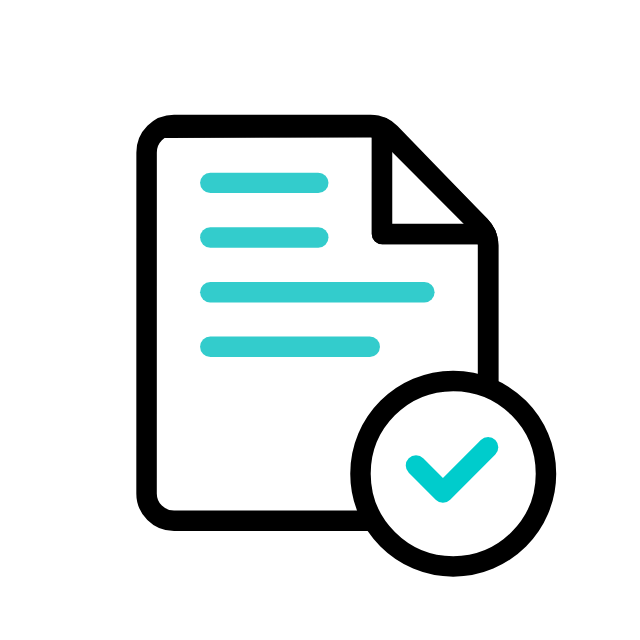
Postman Documentation
For detailed API documentation, including endpoint descriptions, request and response examples, and authentication details, please refer to the API documentation
Dowell Central tendencies for Big Data API Demonstrative Scenarios
In the following scenarios, Dowell will furnish comprehensive instructions on obtaining the Service key and guide you through the steps to use the API. You’ll find examples in various formats such as Python, PHP, React, Flutter, and WordPress in the tabs below. Feel free to explore the examples in each tab for practical insights.
FAQs about Dowell Central Tendencies for Big Statistical Data API
1. What are some key features of the API?
The API can calculate mean, median, mode, standard deviation, kurtosis, skewness, and analyze normal distributions among other things.
2. Can I analyze individual datasets separately?
Yes, the API categorizes results into “Poisson Case Results” for individual datasets and “Normal Case Results” for merged datasets.
3. How do I generate results for a dataset?
You need to provide the API key, dataset title, and values for each list within the dataset.
4. What do the response headers include?
The response headers contain information like success messages, dataset titles, and statistical results for both “Poisson Case” and “Normal Case”.
5. What does "moment" mean in the context of statistical calculations?
Moments provide insights into the shape, symmetry, and spread of a dataset.
6. How can I obtain support if I encounter any issues with the API?
If you encounter any issues, have questions, or need assistance with Dowell Central Tendencies for Big Statistical Data API, you can contact the support team for prompt assistance. Contact us at Dowell@dowellresearch.uk
7. Can I retrieve previously generated results?
Yes, you can retrieve existing data by providing your API key and process ID.
8. How does skewness impact data analysis?
Skewness measures the asymmetry of the dataset’s distribution. Positive skewness indicates a longer tail on the right side, while negative skewness indicates a longer tail on the left side.
9. What is the significance of merged results in the "Normal Case"?
Merged results provide insights into overall tendencies when multiple datasets are combined.
10. What other APIs does Dowell UX Living Lab provide besides Big Statistical Data API?
Dowell UX Living Lab offers a wide range of APIs to enhance user experience and streamline various processes. To explore the full list of APIs available, including Dowell SMS, Dowell Newsletter, Samanta Content Evaluator, and many more.
For more details and to explore the complete list of APIs provided by Dowell UX Living Lab, please visit our documentation page.
How To Get The API Key
- Access the Dowellstore website through this link: https://dowellstore.org and login. Once on the website, navigate to the API service section and activate the DOWELL CENTRAL TENDENCIES FOR BIG STATISTICAL DATA API service. The API Key you need can be found in the dashboard, provided there as the service key. For more information follow the instructions in the videos found at the link below.
[How to get API key and redeem your voucher Step-by-Step Tutorial] - You can also find a step-by-step guide on how to get the API key and activate the API(s) by following this link Get The Service Key
- Then set the API KEY as part of the url parameter as shown below. Replace with your actual API key. The URL format: https://www.socialmediaautomation.uxlivinglab.online/api/v1/generate-sentences/
- Note: Make sure to activate your API from Dowell API Key System link provided above.
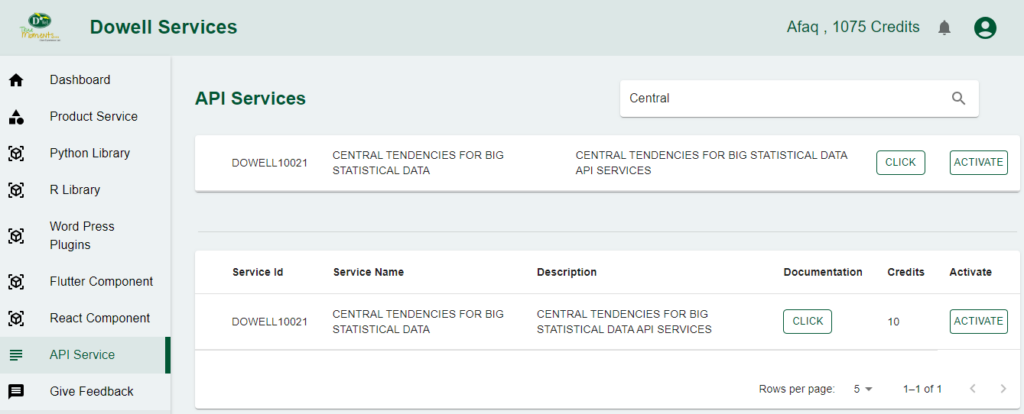
Python Example
1) Generate Central Tendencies
This script sends a POST request to a specified URL with a payload to generate central tendencies. It handles the response, printing success or failure messages along with the response data.
import requests
url = "https://100004.pythonanywhere.com/api"
payload = {
"api_key": "c2636d98-4f43-4be1-9e3b-47cdfcbe832b",
"title": "demo-case4",
"Process_id": 122,
"processSequenceId": 11,
"series": 4,
"seriesvalues": {
"list1": [3, 3, 3, 2, 1, 1, 2, 5, 6, 15],
"list2": [11, 2, 2, 4, 2, 2, 5, 6, 8, 9],
"list3": [9, 2, 3, 3, 4, 4, 4, 7, 8, 9],
"list4": [1, 2, 3, 4, 4, 4, 4, 2, 2, 8],
"list5": [1, 2, 3, 4, 5, 6, 7, 8, 9, 10],
},
}
try:
response = requests.post(url, json=payload)
if response.status_code == 201:
print("Resource created successfully")
# Optionally, you can also print or process the response data
data = response.json()
print(data)
else:
print(f"Request failed with status code: {response.status_code}")
print(response.text)
except requests.exceptions.RequestException as e:
print(f"Request failed with an exception: {e}")
2) View existing data
This script sends a GET request to a specified URL with a payload to view existing data. It handles the response, printing success or failure messages along with the response data.
import requests
url = "https://100004.pythonanywhere.com/api"
payload = {"api_key": "c2636d98-4f43-4be1-9e3b-47cdfcbe832b", "Process_id": 123}
try:
response = requests.get(url, json=payload)
if response.status_code == 201:
print("Resource created successfully")
# Optionally, you can also print or process the response data
data = response.json()
print(data)
else:
print(f"Request failed with status code: {response.status_code}")
print(response.text)
except requests.exceptions.RequestException as e:
print(f"Request failed with an exception: {e}")
PHP Example
1) Generate Central Tendencies
This PHP script generates central tendencies by sending a POST request to a specified URL with a payload. It handles the response, printing success or failure messages along with the response data.
<?php
$url = "https://100004.pythonanywhere.com/api";
$data = array(
"api_key" => "c2636d98-4f43-4be1-9e3b-47cdfcbe832b",
"title" => "demo-case4",
"Process_id" => 122,
"processSequenceId" => 11,
"series" => 4,
"seriesvalues" => array(
"list1" => [3, 3, 3, 2, 1, 1, 2, 5, 6, 15],
"list2" => [11, 2, 2, 4, 2, 2, 5, 6, 8, 9],
"list3" => [9, 2, 3, 3, 4, 4, 4, 7, 8, 9],
"list4" => [1, 2, 3, 4, 4, 4, 4, 2, 2, 8],
"list5" => [1, 2, 3, 4, 5, 6, 7, 8, 9, 10],
),
);
$options = array(
'http' => array(
'header' => "Content-type: application/x-www-form-urlencoded\r\n",
'method' => 'POST',
'content' => http_build_query($data),
),
);
$context = stream_context_create($options);
$result = file_get_contents($url, false, $context);
if ($result !== FALSE) {
echo "Resource created successfully\n";
$data = json_decode($result, true);
print_r($data);
} else {
echo "Request failed with an exception: " . error_get_last()['message'];
}
?>
2) View existing data
This PHP script views existing data by sending a GET request to a specified URL with a payload. It handles the response, printing success or failure messages along with the response data.
<?php
$url = "https://example.com/api";
$data = array(
"api_key" => "your_api_key",
"Process_id" => 123,
);
$options = array(
'http' => array(
'header' => "Content-type: application/x-www-form-urlencoded\r\n",
'method' => 'GET',
'content' => http_build_query($data),
),
);
$context = stream_context_create($options);
$result = file_get_contents($url, false, $context);
if ($result !== FALSE) {
echo "Resource retrieved successfully\n";
$data = json_decode($result, true);
print_r($data);
} else {
echo "Request failed with an exception: " . error_get_last()['message'];
}
?>
React Example
1) Generate Central Tendencies
This React script generates central tendencies by sending a POST request to a specified URL with a payload. It handles the response, logging success or failure messages along with the response data.
import React, { useEffect } from 'react';
const GenerateCentralTendencies = () => {
const url = "https://example.com/api";
const payload = {
api_key: "your_api_key",
title: "demo-case4",
Process_id: 122,
processSequenceId: 11,
series: 4,
seriesvalues: {
list1: [3, 3, 3, 2, 1, 1, 2, 5, 6, 15],
list2: [11, 2, 2, 4, 2, 2, 5, 6, 8, 9],
list3: [9, 2, 3, 3, 4, 4, 4, 7, 8, 9],
list4: [1, 2, 3, 4, 4, 4, 4, 2, 2, 8],
list5: [1, 2, 3, 4, 5, 6, 7, 8, 9, 10],
},
};
useEffect(() => {
const fetchData = async () => {
try {
const response = await fetch(url, {
method: 'POST',
headers: {
'Content-Type': 'application/json',
},
body: JSON.stringify(payload),
});
if (response.status === 201) {
console.log("Resource created successfully");
const data = await response.json();
console.log(data);
} else {
console.log(`Request failed with status code: ${response.status}`);
console.log(await response.text());
}
} catch (error) {
console.log(`Request failed with an exception: ${error.message}`);
}
};
fetchData();
}, [url, payload]);
return (
<div>
{/* Your React component JSX here */}
</div>
);
};
export default GenerateCentralTendencies;
2) View existing data
This React script views existing data by sending a GET request to a specified URL with a payload. It handles the response, logging success or failure messages along with the response data.
import React, { useEffect } from 'react';
const ViewExistingData = () => {
const url = "https://example.com/api";
const payload = {
api_key: "your_api_key",
Process_id: 123,
};
useEffect(() => {
const fetchData = async () => {
try {
const response = await fetch(url, {
method: 'GET',
headers: {
'Content-Type': 'application/json',
},
body: JSON.stringify(payload),
});
if (response.status === 201) {
console.log("Resource retrieved successfully");
const data = await response.json();
console.log(data);
} else {
console.log(`Request failed with status code: ${response.status}`);
console.log(await response.text());
}
} catch (error) {
console.log(`Request failed with an exception: ${error.message}`);
}
};
fetchData();
}, [url, payload]);
return (
<div>
{/* Your React component JSX here */}
</div>
);
};
export default ViewExistingData;
Flutter Example
1) Generate Central Tendencies
This Flutter script generates central tendencies by sending a POST request to a specified URL with a payload. It handles the response, printing success or failure messages along with the response data.
import 'dart:convert';
import 'package:http/http.dart' as http;
void main() {
generateCentralTendencies();
}
void generateCentralTendencies() async {
final url = Uri.parse("https://example.com/api");
final payload = {
"api_key": "your_api_key",
"title": "demo-case4",
"Process_id": 122,
"processSequenceId": 11,
"series": 4,
"seriesvalues": {
"list1": [3, 3, 3, 2, 1, 1, 2, 5, 6, 15],
"list2": [11, 2, 2, 4, 2, 2, 5, 6, 8, 9],
"list3": [9, 2, 3, 3, 4, 4, 4, 7, 8, 9],
"list4": [1, 2, 3, 4, 4, 4, 4, 2, 2, 8],
"list5": [1, 2, 3, 4, 5, 6, 7, 8, 9, 10],
},
};
try {
final response = await http.post(
url,
headers: {'Content-Type': 'application/json'},
body: jsonEncode(payload),
);
if (response.statusCode == 201) {
print("Resource created successfully");
final data = jsonDecode(response.body);
print(data);
} else {
print("Request failed with status code: ${response.statusCode}");
print(response.body);
}
} catch (error) {
print("Request failed with an exception: $error");
}
}
2) View existing data
This Flutter script views existing data by sending a GET request to a specified URL with a payload. It handles the response, printing success or failure messages along with the response data.
import 'dart:convert';
import 'package:http/http.dart' as http;
void main() {
viewExistingData();
}
void viewExistingData() async {
final url = Uri.parse("https://example.com/api");
final payload = {
"api_key": "your_api_key",
"Process_id": 123,
};
try {
final response = await http.get(
url,
headers: {'Content-Type': 'application/json'},
body: jsonEncode(payload),
);
if (response.statusCode == 201) {
print("Resource retrieved successfully");
final data = jsonDecode(response.body);
print(data);
} else {
print("Request failed with status code: ${response.statusCode}");
print(response.body);
}
} catch (error) {
print("Request failed with an exception: $error");
}
}
WordPress Example
Step 1: Set up the API name, unique ID and the base url(below). It’s a prerequisite to have WP-GET API plugin installed in your wordpress website
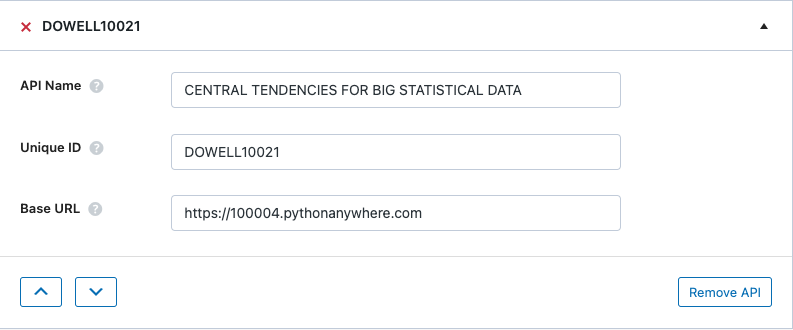
Step 2: Establish the API endpoint with the inclusion of the API key, and configure the request body to contain the required POST fields.
1) Generate Central Tendencies
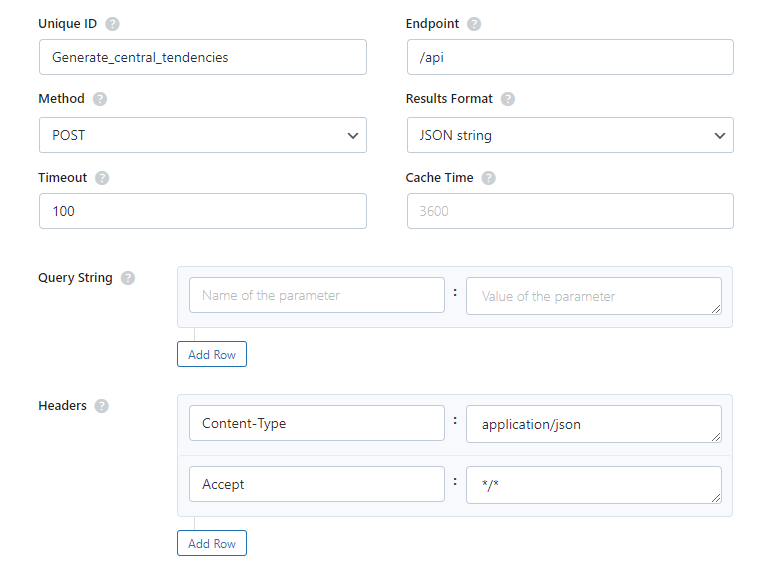
2) View existing data
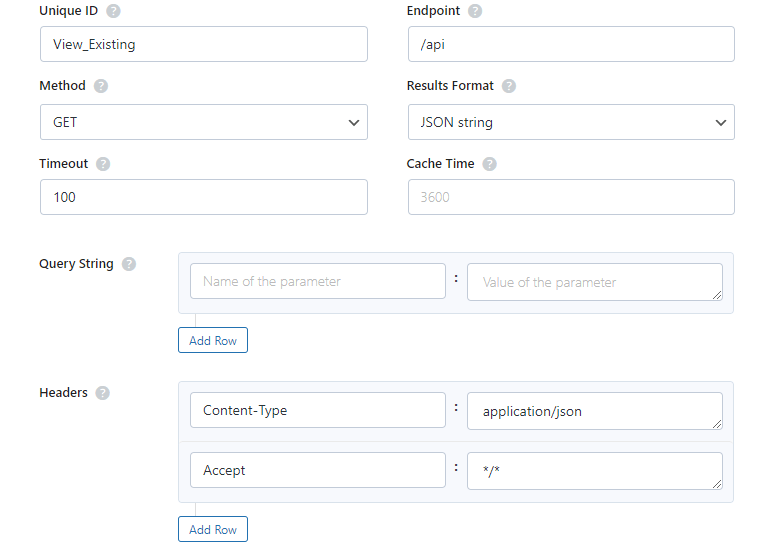
Step 3: Test the endpoint to obtain a jQuery response from the API. Ensure that the API is functioning correctly by sending a test request and examining the response.

 Views Today : 4
Views Today : 4 Views Last 30 days : 520
Views Last 30 days : 520 Views This Year : 2571
Views This Year : 2571 Total views : 5495
Total views : 5495